Moving into the Realm of the Polar Bear
When we venture into the Arctic for research for most of us there is the lingering hope that a polar bear will appear on our watch; at least as long as we are safely outside of its reach.
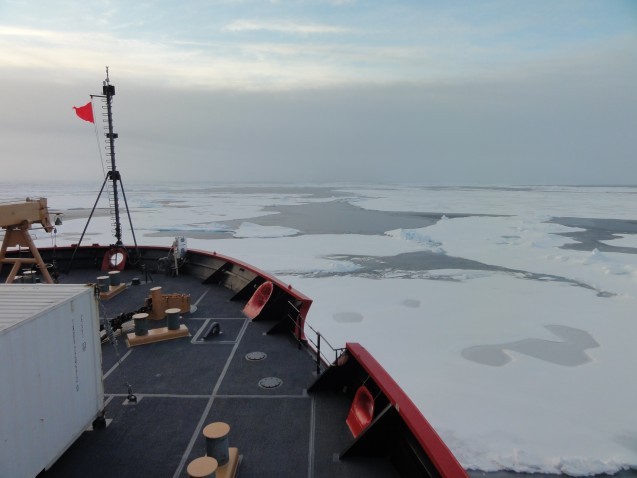
The Healy has now moved off of the shallow continental shelf that extends around the Arctic land border (shown in white in the map below) into the deeper center of the Arctic Ocean. In our last blog we noted that some of the questions Arctic GEOTRACES is addressing include quantifying the fluxes of trace elements and isotopes into and out of the Arctic Basin from the two oceans through choke points like the Bering Strait, as well as characterizing how much comes from rivers. Arctic GEOTRACES is also studying what regulates the Arctic shelf to deep basin exchange, and the role of sea ice in the transport of trace elements and isotopes. (Follow the expedition here.)
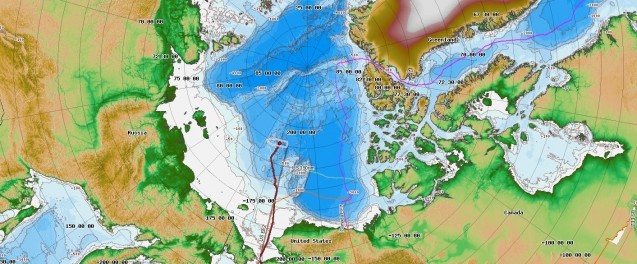
The oval shaped blue area in the map above is the basin of the Arctic Ocean, ranging from ~3,500 meters to ~5,000 meters at its deepest. The Healy is currently over a ridgeline named the Mendeleev Ridge, after a Russian chemist and inventor, Dmitri Mendeleev, long dead when the ridge was first discovered by fellow Soviets in 1948. Mendeleev Ridge is about 1,000 meters shallower than the deep Arctic, bottoming out at ~2,500 meters in depth. The Russians maintain that the ridge, with its long reach into the Arctic basin, gives them claim to large sections of the ocean stretching out to the North Pole. The claim remains unresolved, in part because there are so many questions that still remain about the Arctic. As we move into the basin, we will be sampling to try and better constrain what happens at the shelf/basin interface.
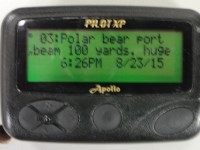
When we venture into the Arctic for research, for most of us there is the lingering hope that a polar bear will appear on our watch; at least as long as we are safely outside of its reach. Several polar bear have been spotted by the watchful eyes of the crew as we have moved into the more tightly packed heavy ice away from the marginal ice zone. However, today a very large bear (yes the alert text says “huge”!) was spotted, and it seemed to have us under thoughtful consideration. The following is a string of images that relay the majesty of this incredible creature in its natural environment, moving with great agility over the sea ice.
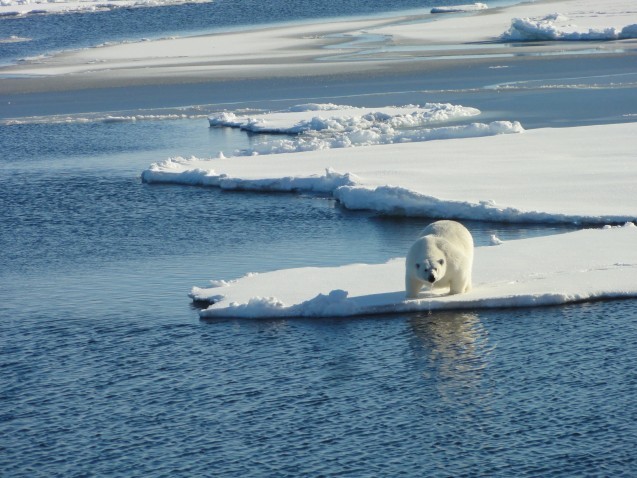
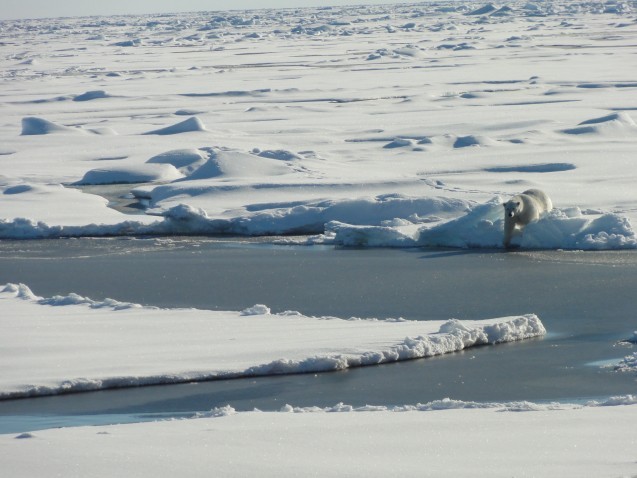
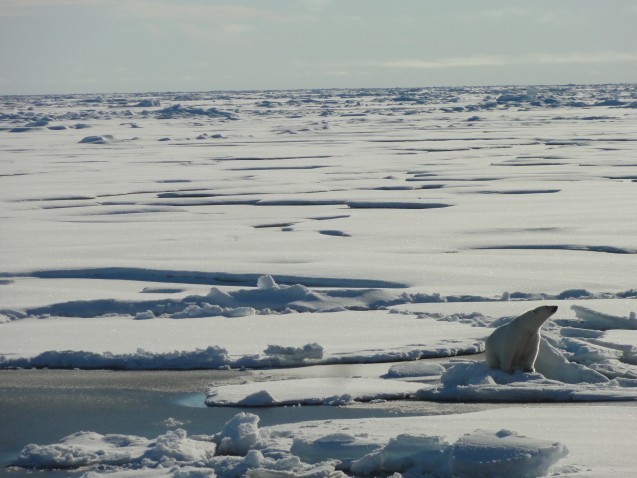
Polar bear live only in the Arctic and rely almost entirely on the marine sea ice environment for their survival. They use the ice in every part of their daily life, for travel, for hunting ringed seal, their favorite food, for breeding and in some cases for locating a birthing den. Their wide paws, which you might be able to see in these photos, distribute their weight when they walk on the sea ice, which late in the season can be quite thin in the annual ice region, melting down to only a thin crust over the water. Their large size, clearly visible in these photos, belies the fact that they are excellent swimmers, helped by their hollow fur, which traps air to keep them buoyant, as well as the stiff hair and webbing on their feet. For all their cuddly appearance, they are strong hunters. Currently polar bear range in conservation status from Vulnerable internationally, to Threatened in the U.S., primarily the result of a warming climate that is melting their habitat…sea ice.
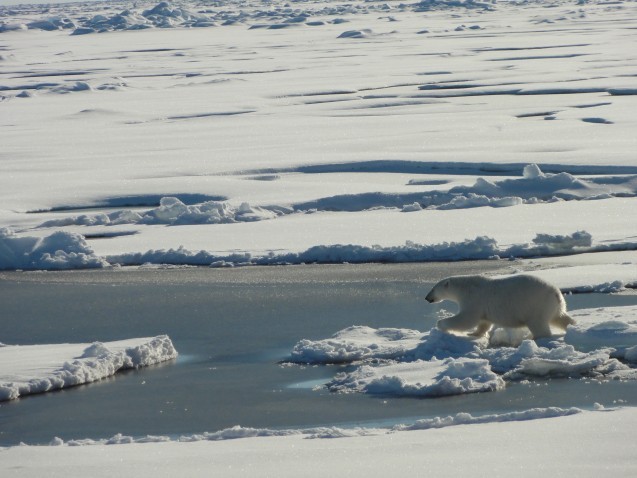
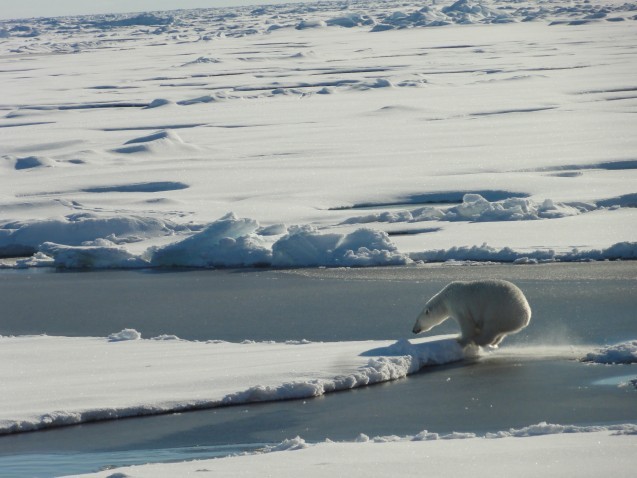
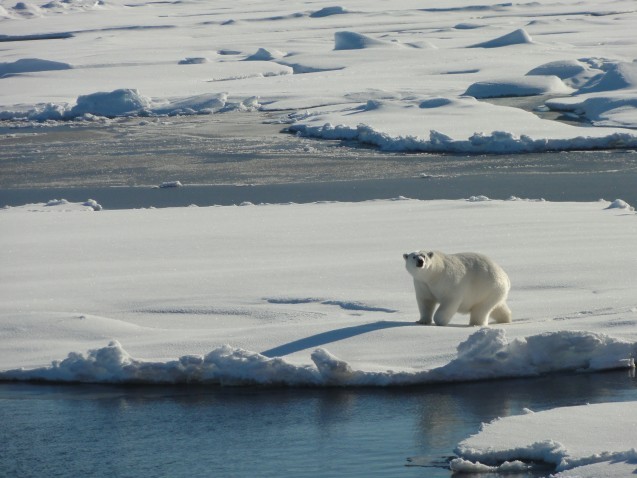
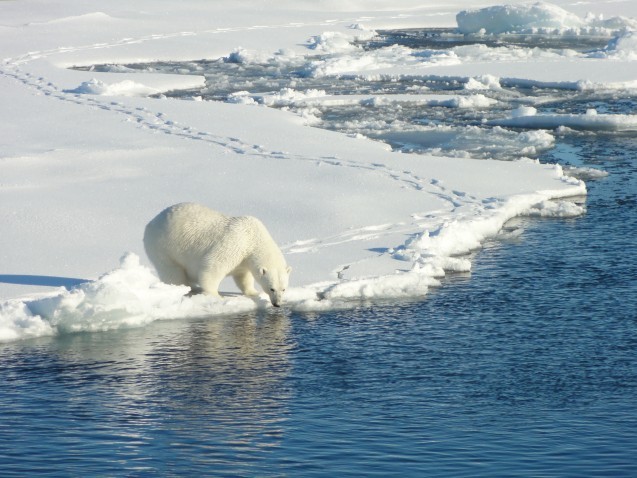

The Arctic is approaching the annual low for sea ice extent, which occurs each year in September. An image of sea ice extent for today (shown in white) against an average of the last thirty years (outlines in yellow) shows how our annual sea ice cover has dropped. Today’s cover is 2.24 million square miles (5.79 million square kms), which is 521,200 sq. miles (1.35 million square kms) below the last 30 year average period. Aside from being of concern to the polar bear, this is part of why Arctic GEOTRACES is so important. We need to understand the role of sea ice in current circulation patterns and delivery of trace elements and isotopes in the Arctic, and then bring this more complete understanding forward to our careful examination of the changing Arctic.
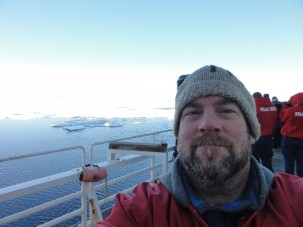
Margie Turrin is blogging for Tim Kenna, who is reporting from the field as part of the Arctic GEOTRACES, a National Science Foundation-funded project.
For more on the GEOTRACES program, visit the website here.
